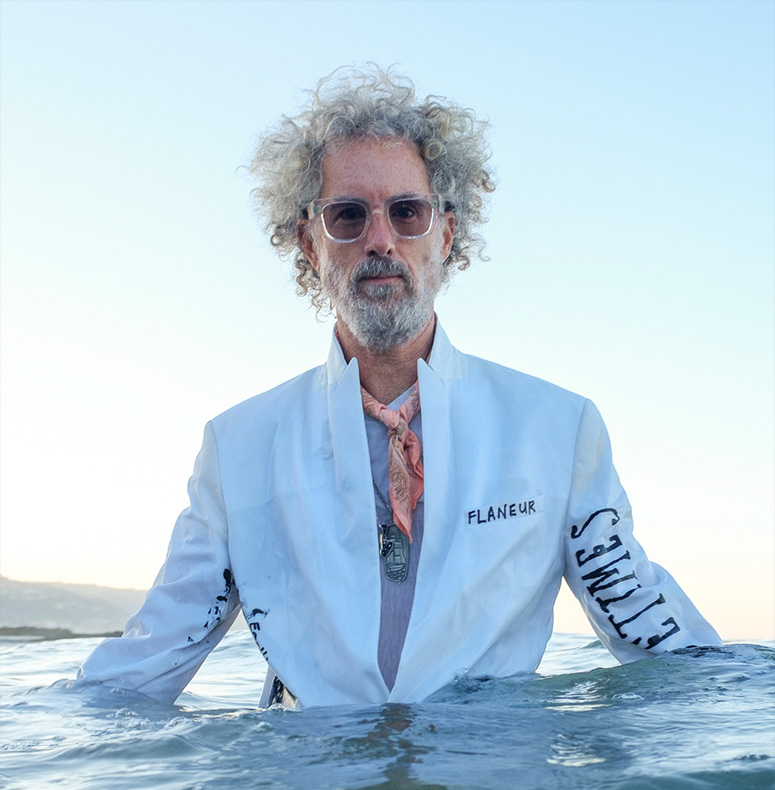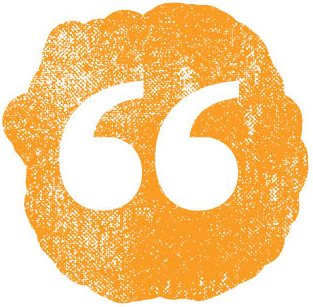
The
Authentic
Self

 “I’m just in this perpetual state of transition,” says Brooks Atwood (ARCH ’99).
“I’m just in this perpetual state of transition,” says Brooks Atwood (ARCH ’99).
He’s not kidding. Even before Atwood became a star of Netflix’s Hack My Home, which recently hit the streaming platform’s top-10 most-watched list in 67 countries, he sketched in the streets of Paris to eat, headed impressive architecture projects in California, co-founded two design firms, taught at a tech institute, and was a finalist on a reality TV show.
To those who would paint him as wayward and chaotic, Atwood stresses that creativity is found in many places—and found most easily when you’re not looking for it.
“You have to give creativity space, silence. You have to let it percolate. There’s no instant tea,” Atwood says, before chuckling. “I’ve found that with my freeness, my openness…something about me pushes people’s buttons.”
“You have to give creativity space, silence. You have to let it percolate. There’s no instant tea,” —Brooks Atwood
Born in Kalamazoo, Michigan, Atwood moved around as a child, before tentatively settling in Naperville, Illinois.
Both his parents were gregarious and could command a room. But they divorced when he was four, and his mom got a job as a dairy saleswoman, an acquaintance of countless chefs and restaurateurs. Atwood began to take after her.
When he entered high school, Atwood felt he “tuned into my authentic self. And I’ve been chasing that all my life. I knew I was different, artistic and free, and I just didn’t know what to do with those things.”
On trips to visit his father in Virginia, the two would go sailing on the ocean, “following the wind and your own thoughts.…Those moments to me are just so precious.” Atwood began to tackle the existential, with questions such as: “What is self? What is identity? And who’s doing the looking?”
He didn’t get it right the first time.
“I thought rebellion was cool, and I thought that’s what I was supposed to be doing,” he says.
As soon as he turned 18, Atwood moved out. He lived in downtown Chicago and later attended Purdue University in Indiana for a year, before one of his professors told him he should go to architecture school. His math ability mixed with his break-the-glass mentality would fit nicely in the field. He enrolled at Illinois Tech.
By his third year, though, Atwood chafed at the coursework. “I overthought everything,” he says. So he did the only thing that seemed reasonable: He sold all his possessions and hopped on a plane to Paris.
Atwood wandered for a time; he hitchhiked across Europe and landed again in Paris, where he sketched as a street artist for money.
“I’ve failed at many things in my life, and all had something in common: fear,” Atwood says.
Did he succeed in Paris? Was he afraid? Atwood’s next two questions would be, ‘what is fear?’, ‘what is success?’
“I was hungry and tired and alone and scared and confused,” Atwood says. “But I learned a French word: flaneur. It means to just basically wander around and discover things you wouldn’t have discovered if you were actually looking for them.”

PHOTO: NETFLIX
He secured a long-term French visa, learned the language, and immersed himself in the lifestyle. He began selling and exchanging art, not just sketches, and supplemented his income by hosting dinner parties.
But over time, he felt the need for more. “I’m avoiding something,” he says he thought. “I don’t know what it is, but I need to go back.”
Atwood returned to Illinois Tech, finished up his architecture degree, and took a job at Florian Architects in Chicago before moving to New York. There, he received a master’s degree in architecture from Columbia University, and started an architecture and design firm with two friends called POD Design + Media.
“Atwood is really in his heart a designer. It’s the way he looks at the world: very inquisitive, very, ‘what if?’” says Clay Odom, one of the old firm’s partners.
Atwood also took a job as an adjunct professor at New Jersey Institute of Technology, teaching architecture and design, and again urging rebellion against mind-killing rigidity.
“I was the crazy professor. My students hated me and would cry at the beginning, and at the end were all bonded as a team,” he says.
But professional ruts didn’t have to be that deep for Atwood to feel like he was in one. He went searching for more.
After taking a motorcycle trip across the country, Atwood responded to a casting call for an interior design reality show on HGTV called Design Star. He was cast as a contestant, made it to the finale, and finished as a runner-up.

PHOTO: NETFLIX
He got an agent, then secured a role as a judge on Shop Class, a children’s building competition show on Disney+.
In the meantime, Atwood closed his office in New York, packed his bags and moved to Los Angeles, where he worked as a design director for the architectural firm OFFICEUNTITLED. He designed several large hospitality projects, including the well-received Cayton’s Children Museum in Los Angeles and the award-winning Woodlark Hotel in Portland.
“All my projects don’t have style. I hate that word. Style has a formula,” Atwood says. “I like ‘mood’ or ‘vibe.’”
But being in charge of hospitality projects didn’t bode well for Atwood when the COVID-19 pandemic kicked in. He was laid off and started a new firm called Berries Design with his wife, a serial entrepreneur.
That’s when his big break in entertainment happened: Atwood was chosen as one of four co-hosts of Hack My Home, where he is in charge of “innovation,” navigating brainstorms and cheerleading collaborative efforts to come up with uniquely utilitarian ideas.
“Brooks is exactly the same on TV and in person. He’s always energetic and excited, whether we’re eating or talking about architecture,” says his former partner, Odom. “This isn’t an act.”
When asked now about his new-found fame, or the fact that trips to his local grocery store now include two hours of chit-chat, he says, “I’m not trying to be on TV to be rich and famous. I’m not giving it too much weight or power.” He adds, “If I think about the outreach, it’s a little scary to me.”
In the meantime, Atwood’s tendency toward transition is in overdrive: His firm has designed multiple hotels, and is currently designing The Dalton in San Diego. He’s working on a children’s book about moss and lichen, and another called What is a BEWK?—questioning how one defines a book. He’s working on a podcast with a hotel developer called Hotel Crush, where the two chat with celebrity guests about their crushes on well-known hotels.
And at his local city council meetings, “every month I propose a new design initiative. All works in process,” he says.
There’s never an end. “What’s an end?” Atwood would ask. But recently, at least, “there’s a big mindshift I just went through,” he says, referencing the iconic life-coaching principle, “Do, Be, Have.”
“I was so caught up in the doing. I was doing, then being, then having. I switched the ‘be’ and the ‘do.’ Just be my authentic self, and from there, things will happen.”●
More online: pod-design.com
